A Comprehensive Introduction to Professional Website Design
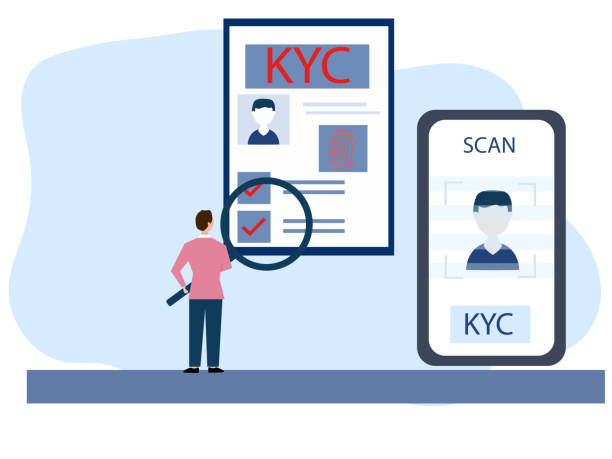
In today’s world, a digital presence is vital for every business and individual seeking visibility and engagement with their audience.
Therefore, #Professional_Website_Design is not just an advantage, but a necessity.
A website meticulously designed according to User Experience (UX) and User Interface (UI) principles can enhance your brand image, build audience trust, and ultimately lead to increased sales and engagement.
This section provides an overview and an explanatory insight into why investing in professional website design is important and what components distinguish it from an ordinary site.
From visual aesthetics to optimal performance and #Information_Security, every component plays a crucial role in ultimate success.
These aspects require a specialized set of knowledge and skills, achievable only through a #multi-faceted approach.
The importance of #Responsive_Design and loading speed are also briefly mentioned in this introduction to prepare the audience for deeper discussions.
Below, we will elaborate on each of these elements in an educational manner to provide a more complete understanding of the process of achieving a flawless website.
The main goal of a high-quality website design is to create a platform that not only conveys information correctly but also encourages users to take desired actions (such as purchasing, contacting, or registering).
This requires a deep understanding of user behavior and persuasion techniques.
Did you know your company’s website is the first point of contact for 75% of potential customers?
Your website is the face of your brand. With Rasaweb‘s corporate website design services, build an online presence that earns customer trust.
✅ Create a professional and lasting image for your brand
✅ Attract target customers and increase online credibility
⚡ Get free consultation from Rasaweb experts!
Key Principles of User Experience (UX) and User Interface (UI) in Web Design
![]()
At the heart of every professional website design is a deep understanding of User Experience (UX) and User Interface (UI).
While these two concepts seem related, they have fundamental differences.
UX refers to the entire experience a user has when interacting with your website; Is navigation easy? Is information easily found? Is the purchasing process smooth and hassle-free? UI, in contrast, deals with the visual and interactive aspects of the website: the appearance of buttons, fonts, colors, and the arrangement of elements.
A website with a beautiful UI but poor UX is like an expensive sports car with uncomfortable seats that is not enjoyable to drive.
UX design requires research, testing, and understanding user needs, while UI design relies on graphic skills and knowledge of visual design principles.
To achieve a professional website, both aspects must be developed in parallel and complement each other.
This section provides a comprehensive guide to understanding these principles and helps you answer thought-provoking questions like “How can I improve user experience without sacrificing visual appeal?”
Adhering to UX principles from the outset of the professional website design process not only contributes to user satisfaction but also leads to reduced bounce rates and increased conversion rates in the long run.
Proper implementation of these principles requires an analytical view of user data and received feedback.
Choosing the Right Platform and Technologies for Your Website
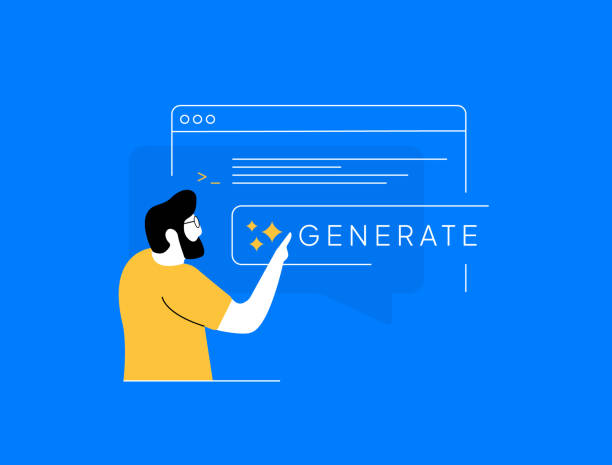
Choosing the right platform and technology is one of the most crucial decisions in the professional website design process.
This choice not only affects the initial cost but also determines the website’s scalability, security, and future performance.
There are numerous options for building a website, each with its own advantages and disadvantages.
Content Management Systems (CMS) like WordPress, Joomla, and Drupal are popular solutions for creating websites without requiring deep programming knowledge.
WordPress, due to its high flexibility, numerous plugins, and large user community, is the first choice for many businesses and individuals.
In contrast, for more complex projects with specific requirements, using web development frameworks like React, Angular, Vue.js for frontend (client-side) and Node.js, Python (with Django/Flask), or PHP (with Laravel/Symfony) for backend (server-side) is more suitable.
These specialized choices provide greater control over functionality and customization.
A precise analysis of your business’s current and future needs, available budget, and your team’s technical knowledge will help you choose the best platform.
Here, a comparative table is provided to make your decision-making process more explanatory and easier, offering you practical guidance.
| Platform | Advantages | Disadvantages | Suitable for |
|---|---|---|---|
| WordPress | Ease of use, numerous plugins, large community, SEO friendly | Requires regular maintenance, sometimes slow, security needs attention | Blogs, small and medium corporate websites, online stores |
| Joomla | High flexibility, advanced user management, multilingual | More complex than WordPress, fewer plugins, steeper learning curve | Complex projects, government websites, social portals |
| Drupal | Very high security, excellent scalability, high customization capability | Very complex, requires programming knowledge, costly | Large corporate websites, government projects, universities |
The Importance of Content and SEO in Website Design Success
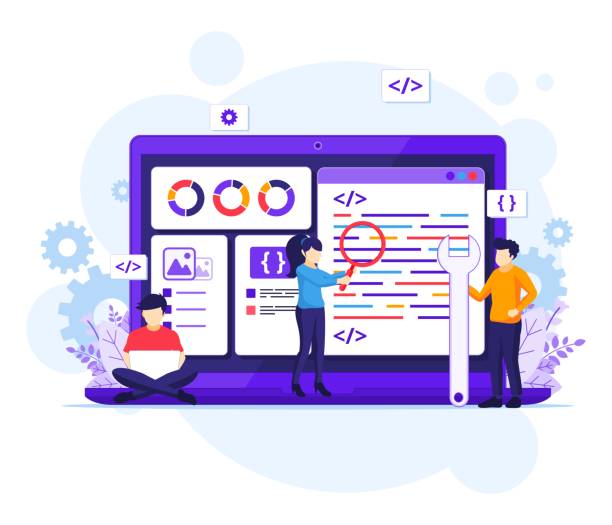
Content and Search Engine Optimization (SEO) are two main pillars in the success of a professional website design.
Without high-quality and relevant content, even the most beautiful website cannot attract and retain audiences.
Content should not only be informative and engaging but also structured in a way that is understandable to search engines.
This is where SEO comes in.
SEO comprises a set of techniques aimed at improving your website’s ranking in search results.
These techniques include proper keyword usage, optimizing loading speed, internal linking structure, and acquiring high-quality backlinks from other sites.
Precise guidance in this area is vital for any advanced website development.
A strong content strategy, starting with keyword research, can drive targeted visitors to your website.
Image optimization, proper use of title tags and meta descriptions, and ensuring website responsiveness (for correct display on mobile) are also important aspects of technical SEO.
This educational topic is very broad, but understanding its basic principles is essential for anyone seeking online visibility.
Furthermore, creating thought-provoking and valuable content encourages users to spend more time on your website and return, which is itself a positive signal for search engines.
A professional website design without a strong SEO strategy is like building a beautiful house in the desert; no one will find it.
Research shows that 80% of customers trust companies with professional websites more. Does your current site earn this trust?
With Rasaweb’s corporate website design services, solve the problem of customer distrust and a weak online image forever!
✅ Create a professional image and increase customer trust
✅ Generate more sales leads and grow your business
⚡ Get free consultation
Responsiveness and Mobile-Friendly Design for Optimal User Experience
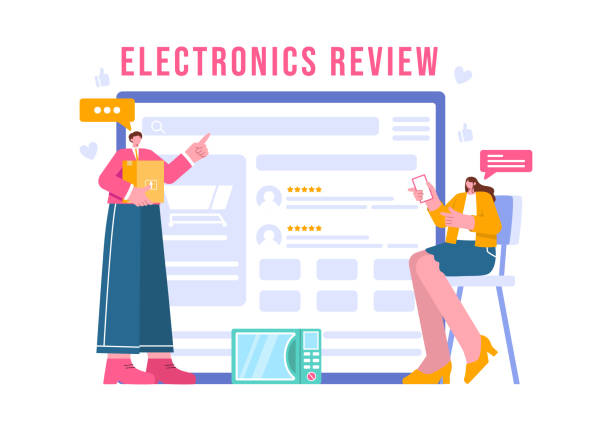
In the current era, where smartphone usage for internet access is increasing, responsiveness and mobile-friendly design have become one of the most crucial features of any professional website design.
A website that does not display correctly on various screen sizes, from desktop to tablet and mobile, not only provides a poor user experience but also suffers in search engine rankings.
Responsive Web Design means designing a website that automatically adapts to the user’s screen size.
This is achieved using CSS Media Queries and flexible layouts.
The “Mobile-First” approach means that the design and development process begins for mobile devices first and then expands to larger screens.
This approach ensures that all functionalities and content are properly accessible and usable on the smallest displays.
This section provides an in-depth explanation of the importance and implementation of these principles in professional website creation.
On the other hand, website loading speed on mobile is also crucial, as mobile users often have less patience.
Therefore, optimizing images, compressing codes, and using a CDN (Content Delivery Network) are among the actions that should be considered.
These tips offer practical guidance for improving your website’s performance on mobile devices and are a vital part of the professional site design process.
Website Security and Post-Launch Maintenance
![]()
After the completion of the professional website design process and its launch, security and continuous maintenance become as important as the design itself.
An insecure website can lead to data loss, damage to brand reputation, and even legal penalties.
Implementing an SSL certificate (HTTPS) for encrypting communications is the first step in ensuring security and is considered a standard for every website today.
Regularly updating the Content Management System (CMS), plugins, and themes to address security vulnerabilities is crucial.
This section provides a comprehensive guide to maintaining your website’s security and stability after advanced website development.
Using strong passwords, limiting unsuccessful login attempts, and implementing a Web Application Firewall (WAF) are also among other security measures.
In addition to security, regular website maintenance includes checking for broken links, optimizing the database, and regularly backing up all information.
Regular backups can be life-saving not only in the event of cyberattacks but also in case of human errors or server issues.
This specialized and preventive approach ensures that your website is always accessible and performs optimally.
News related to the latest security threats and ways to counter them should be continuously monitored to prevent potential vulnerabilities.
A professional website design with poor maintenance quickly turns into a vulnerable website.
The Role of Analysis, Continuous Improvement, and Performance Optimization

After launching a professional website design, the work has just begun.
To ensure your website achieves its goals and provides an optimal user experience, continuous analysis and ongoing improvement are essential.
Tools like Google Analytics and Google Search Console provide valuable information about user behavior, traffic sources, keywords, and page performance.
Analyzing this data helps you identify your website’s strengths and weaknesses and make data-driven decisions for optimization.
This section provides an in-depth analysis of the importance of analysis and how to use data for performance improvement.
Website performance optimization includes improving loading speed, reducing file sizes, and optimizing images.
A/B testing is also a powerful method for testing different versions of a page or element (such as a call-to-action button) to determine which version performs best.
This educational and experimental approach helps you continuously improve user experience and increase conversion rates.
Below, a table is provided that illustrates some of the most important website performance metrics and how to monitor them, so your professional website optimization process becomes more structured.
This continuous process guides you towards an evolving professional website.
| Metric | Explanation | Why it matters? | Monitoring Tools |
|---|---|---|---|
| LCP (Largest Contentful Paint) | Time required to render the largest content element in the viewport | Indicates loading speed and initial user experience | PageSpeed Insights, Lighthouse, Google Search Console |
| FID (First Input Delay) | Time delay of the first user interaction with the page (e.g., click) | Indicates website responsiveness to user input | PageSpeed Insights, Lighthouse |
| CLS (Cumulative Layout Shift) | The extent of visual stability of the page during loading | Prevents unwanted layout shifts that disrupt user experience | PageSpeed Insights, Lighthouse |
| Bounce Rate | Percentage of users who view only one page and leave the website | Indicates content engagement and user experience | Google Analytics |
| Conversion Rate | Percentage of visitors who complete the desired action (purchase, registration) | Indicates the website’s success in achieving business goals | Google Analytics, CRM |
Common Web Design Mistakes and Ways to Avoid Them

In the professional website design process, there are common mistakes that can waste your efforts and investment.
Identifying and avoiding these mistakes is a crucial step towards success.
One of the biggest mistakes is neglecting User Experience (UX) in favor of visual appeal (UI).
A website that is beautiful but unusable quickly loses users.
Another mistake is not optimizing for mobile, which, given the high statistics of mobile internet usage, can lead to losing a large portion of the audience.
Slow website loading speed is also among the issues that severely negatively impact user satisfaction and SEO ranking.
Ignoring the importance of SEO during the design phase is also a big mistake, as implementing SEO changes after launching the website can be time-consuming and costly.
Weak or disorganized content, lack of clear calls-to-action (CTAs), and excessive complexity in website navigation are other common mistakes.
This section provides an explanatory and analytical guide on how to identify and rectify these mistakes in the professional site design process.
By being aware of these pitfalls, you can prevent wasted resources and create a successful professional website.
This discussion raises thought-provoking content: Is your design team sufficiently aware of these mistakes?
Do you have an e-commerce site, but your sales are not as expected? Rasaweb solves your problem forever with professional e-commerce website designs!
✅ Significant increase in conversion rates and sales
✅ Unparalleled user experience for your customers
⚡ Click to get free consultation from Rasaweb!
Future Outlook of Web Design and Emerging Trends
![]()
The world of professional website design is constantly evolving, and awareness of emerging trends is crucial for maintaining competitiveness.
Artificial Intelligence (AI) and Machine Learning (ML) will play an increasing role in personalizing user experience, optimizing content, and even automating certain aspects of design.
Voice assistants and voice search are also gradually gaining more importance, requiring websites to be optimized to respond to these types of searches.
Virtual Reality (VR) and Augmented Reality (AR) have the potential to create more interactive and engaging experiences that can revolutionize how users interact with websites.
Web 3.0, focusing on decentralization, blockchain, and user data ownership, will also bring profound changes to the web infrastructure and provide new opportunities for professional website creation and decentralized applications (dApps).
This section offers a predictive analysis of these trends and their impact on the future of web design.
UI design using 3D graphics and advanced animations is also expanding to create more visually appealing experiences.
Finally, a focus on web sustainability and reducing energy consumption by websites will also become an important trend.
These new and exciting developments offer unparalleled opportunities for innovation in professional website design, and professionals in this field must prepare themselves for these changes.
Conclusion and Next Steps for Building a Successful Website
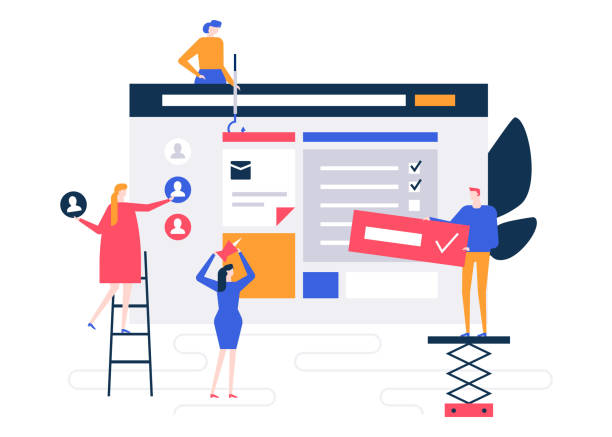
Throughout this article, we explored various dimensions of professional website design, covering everything from basic user experience principles to advanced technologies and future trends.
It became clear that a successful website is not just a collection of code and graphics, but the result of an analytical, strategic, and creative process that encompasses user needs and business goals.
By adhering to UX/UI principles, choosing the right platform, paying attention to SEO and content, ensuring responsiveness, maintaining security, and continuously improving based on data, you can create a powerful and impactful online presence.
For the next steps, it is recommended to first prepare a comprehensive action plan that includes goals, budget, timeline, and required resources.
Then, collaborate with a specialized and experienced team in professional website design who can turn your vision into reality.
Don’t forget that your website is a living entity and requires continuous maintenance, updates, and optimization to maintain its effectiveness and appeal.
By following the latest news and educational resources in technology and trends, you will always be a step ahead.
Investing in professional website design is an investment in your business’s future that will yield significant returns.
Ultimately, your success in the digital space depends on your commitment to quality, innovation, and user-centricity.
Frequently Asked Questions
| Row | Question | Answer |
|---|---|---|
| 1 | What is professional website design? | The process of creating a user-friendly, visually appealing, fast, secure, and search engine-optimized website that achieves business goals and connects with the audience. |
| 2 | Why is responsiveness important in professional design? | Responsiveness ensures that the website displays correctly on all devices (mobile, tablet, desktop) and provides a consistent user experience, which is also crucial for SEO. |
| 3 | What is the role of UI/UX in professional website design? | UI (User Interface) focuses on the visual appeal and appearance of the website, and UX (User Experience) focuses on ease of use, simple navigation, and enjoyable user interaction with the website. Both are essential for attracting and retaining the audience. |
| 4 | How does website loading speed affect its professionalism? | High loading speed improves user experience, reduces Bounce Rate, and is an important factor in website ranking by search engines. |
| 5 | What is the importance of SEO in professional website design? | SEO helps the website appear in Google and other search engine results, attracts more organic traffic, and contributes to business growth. |
| 6 | What role does high-quality content play in a professional website? | Engaging, relevant, and useful content keeps users on the website longer, enhances brand credibility, and is also very important for SEO. |
| 7 | What does professional website security include? | Using an SSL certificate, regular updates of the platform and plugins, regular backups, using strong passwords, and protection against cyberattacks. |
| 8 | What platforms are common for professional website design? | Content Management Systems (CMS) like WordPress and Joomla, as well as coding frameworks like React, Angular, and Vue.js for custom development. |
| 9 | What are the main phases of professional website design? | Planning and research, UI/UX design, coding and development, testing and launch, and finally maintenance and support. |
| 10 | What is the main difference between a professional website and an amateur website? | A professional website is built with a focus on business goals, user experience, security, performance, and optimization, while an amateur website usually lacks these comprehensive and targeted approaches. |
And other services of Rasaweb Advertising Agency in the field of advertising
Smart Social Media: An effective tool for increasing sales with custom programming.
Smart Data Analysis: Designed for businesses looking to analyze customer behavior through Google Ads management.
Smart Advertising Campaigns: A fast and effective solution for online growth, focusing on intelligent data analysis.
Smart Direct Marketing: Designed for businesses seeking online growth through attractive UI design.
Smart SEO: A new service for increasing digital branding through user experience customization.
And over hundreds of other services in the field of internet advertising, advertising consultation, and organizational solutions
Internet Advertising | Advertising Strategy | Advertorial
Resources
Web Design Articles
WebSoft – Website Design Articles
Asan Web – Website Design Training
Tarah Web – Web Design Blog
? At Rasaweb Afarin, your dream of a powerful digital presence becomes a reality. We elevate your business by providing comprehensive digital marketing services, including fast website design and professional optimization.
📍 Tehran, Mirdamad Street, next to Bank Markazi, Southern Kazeroon Alley, Ramin Alley, No. 6

